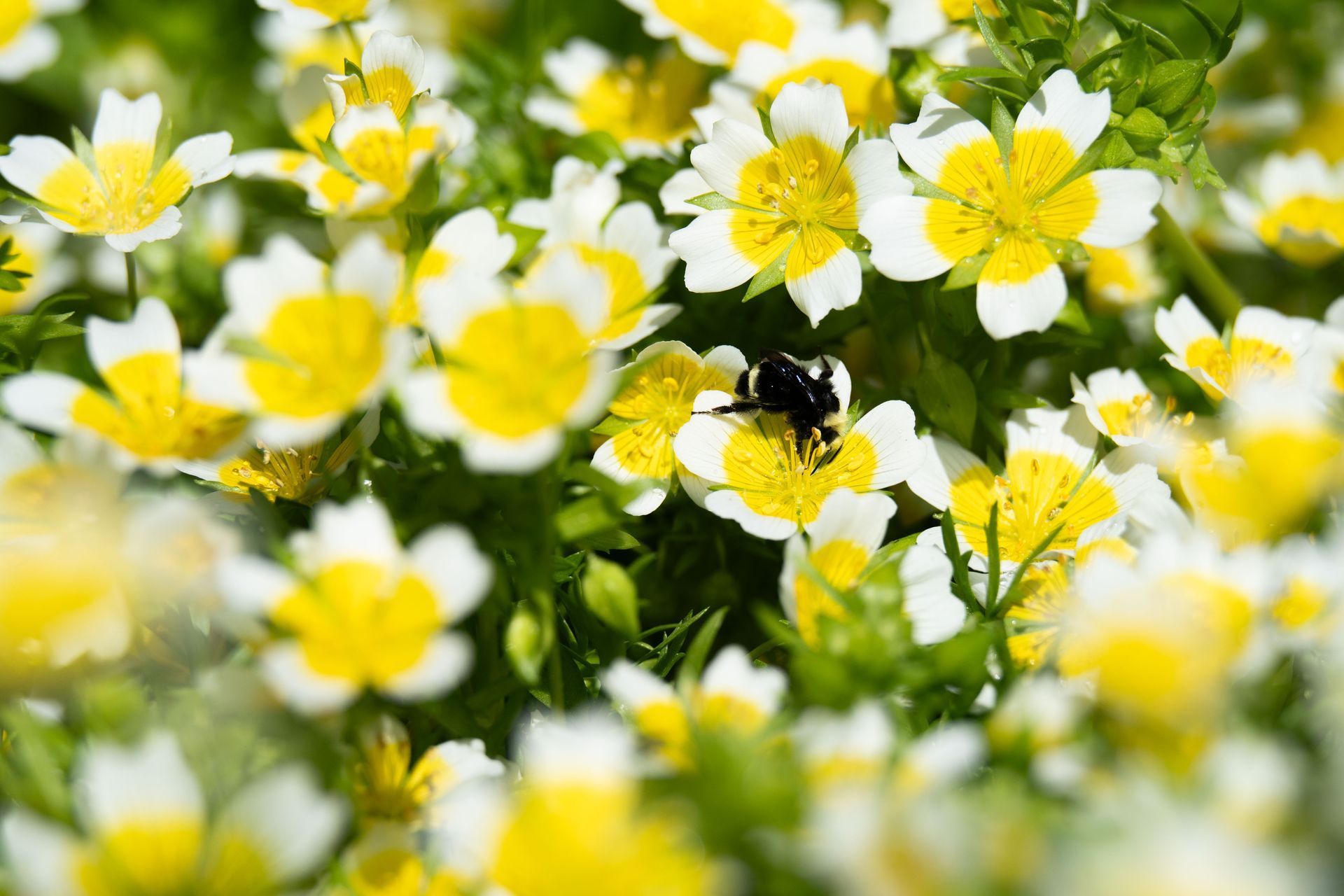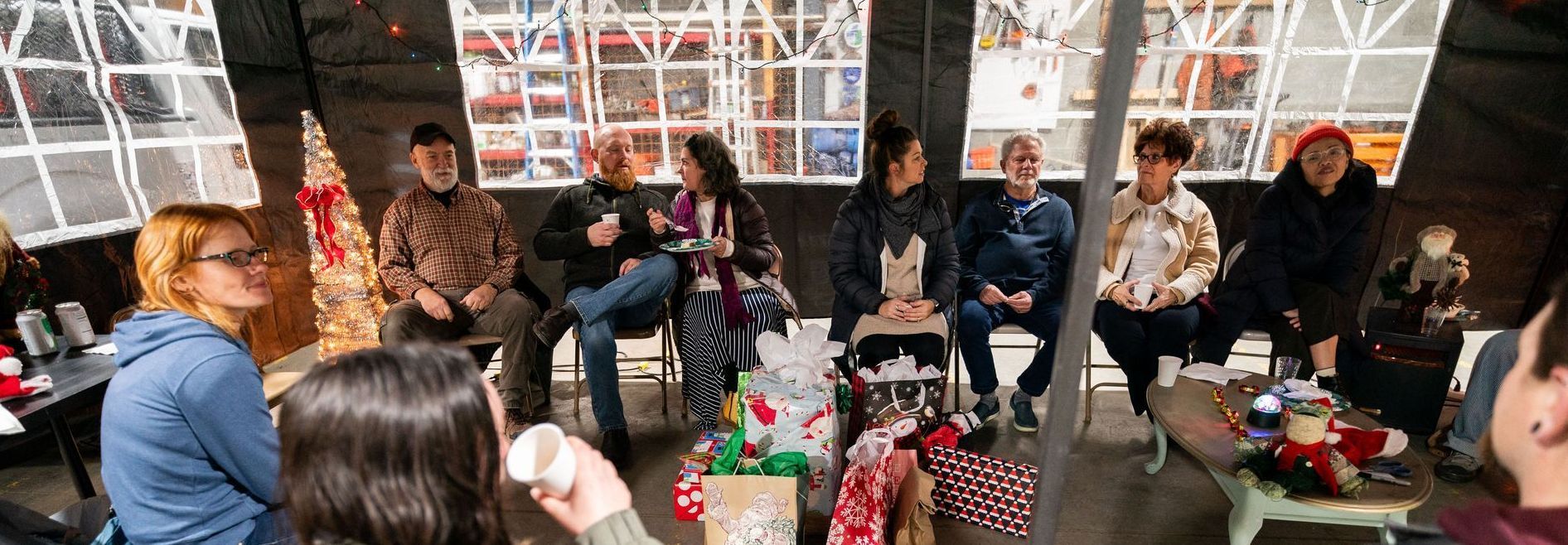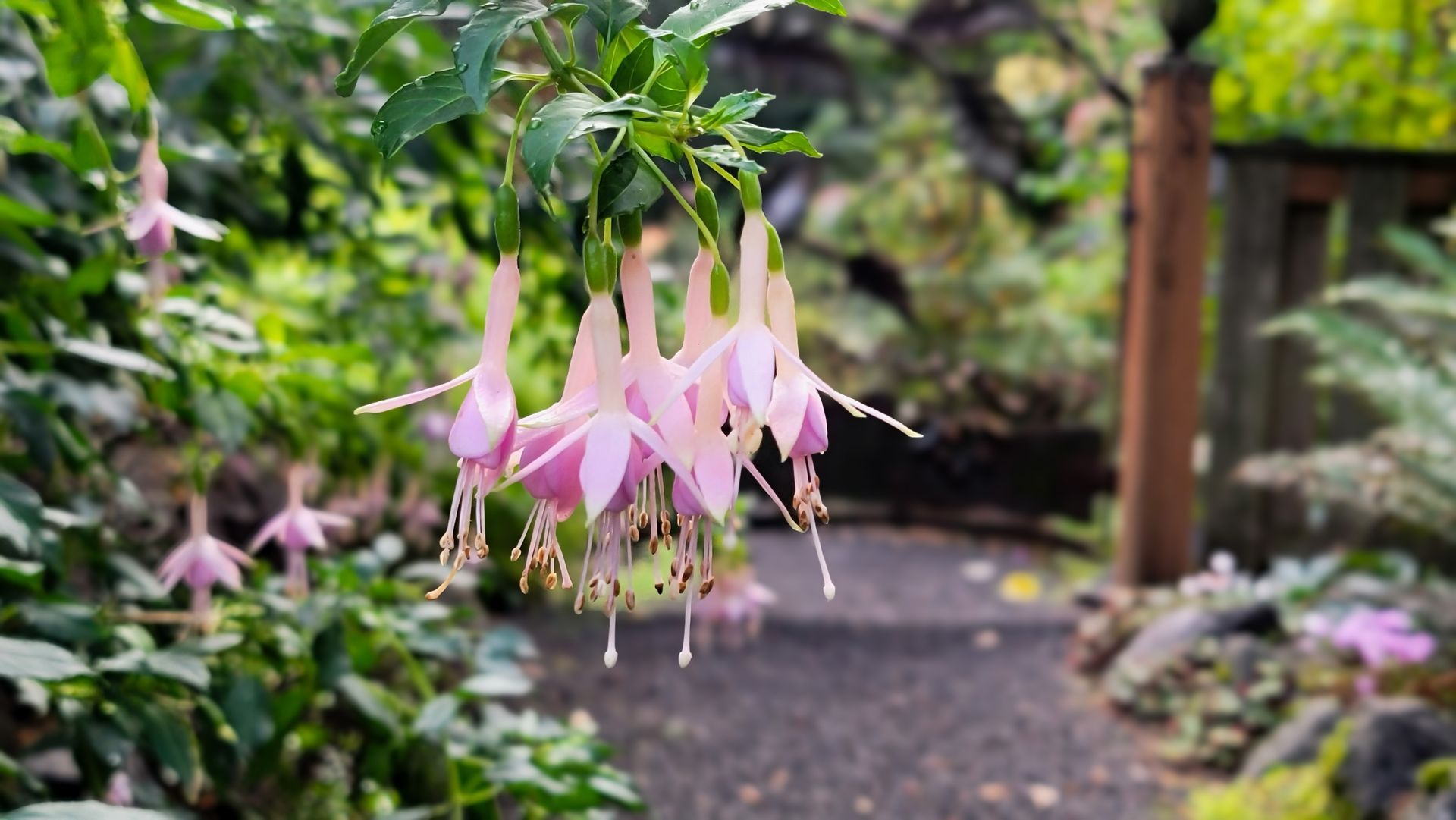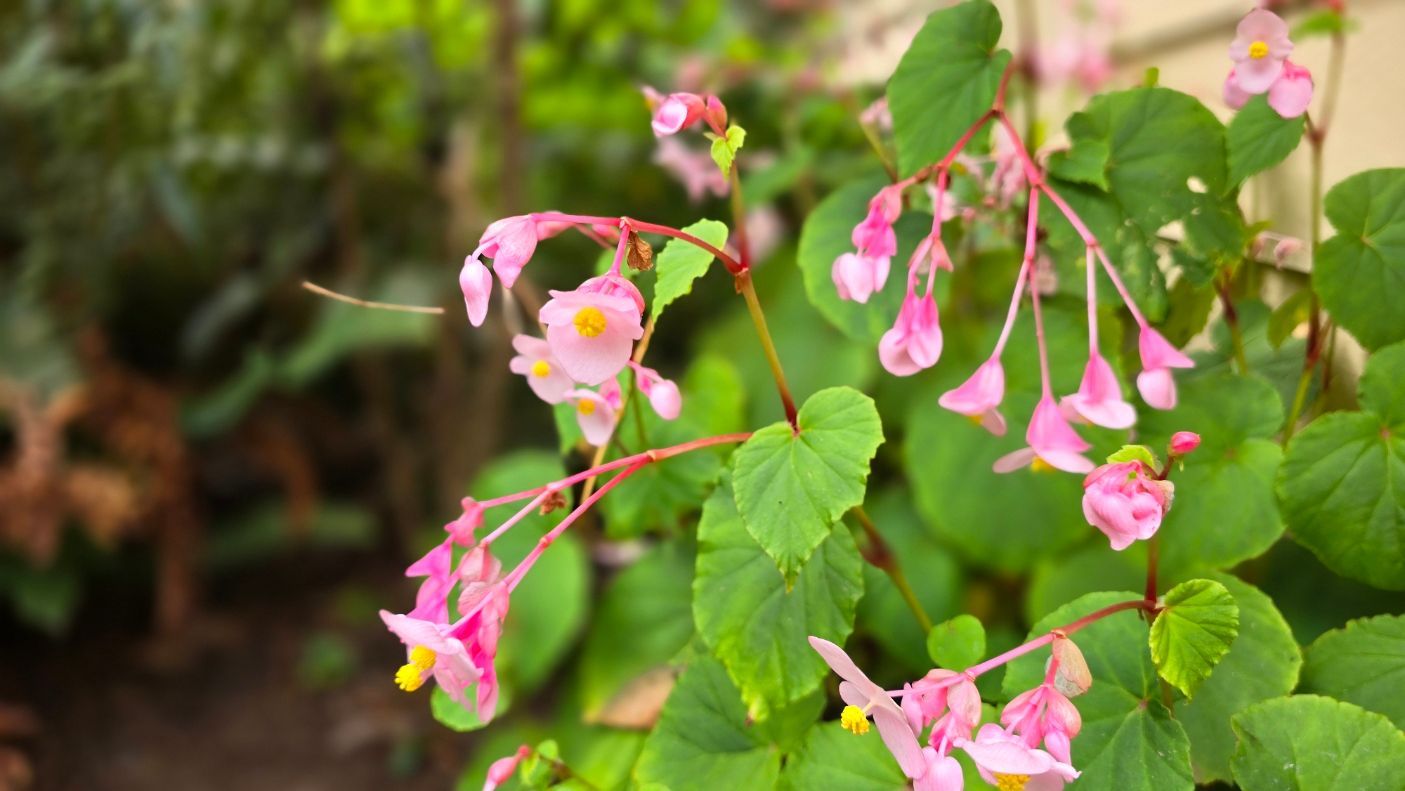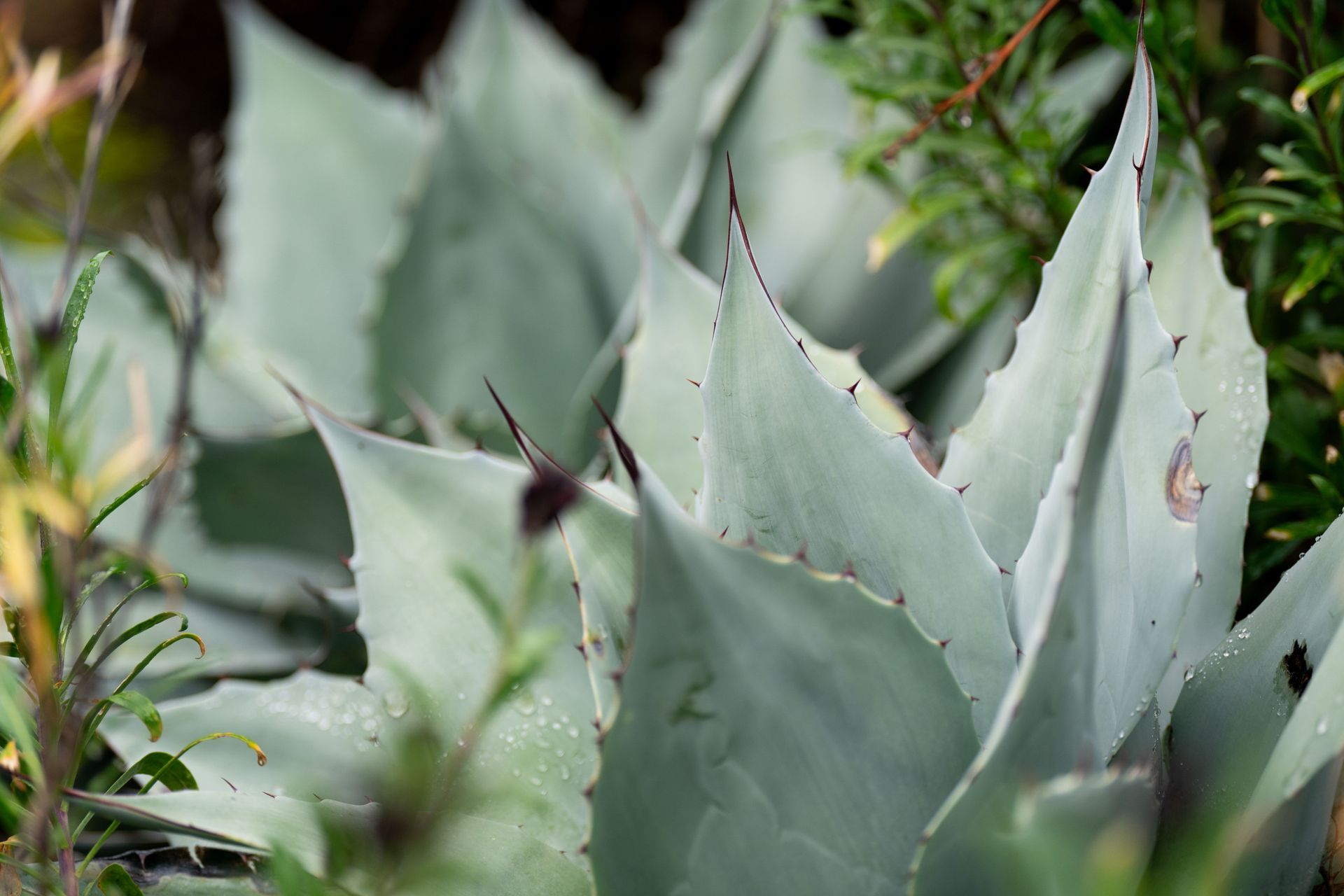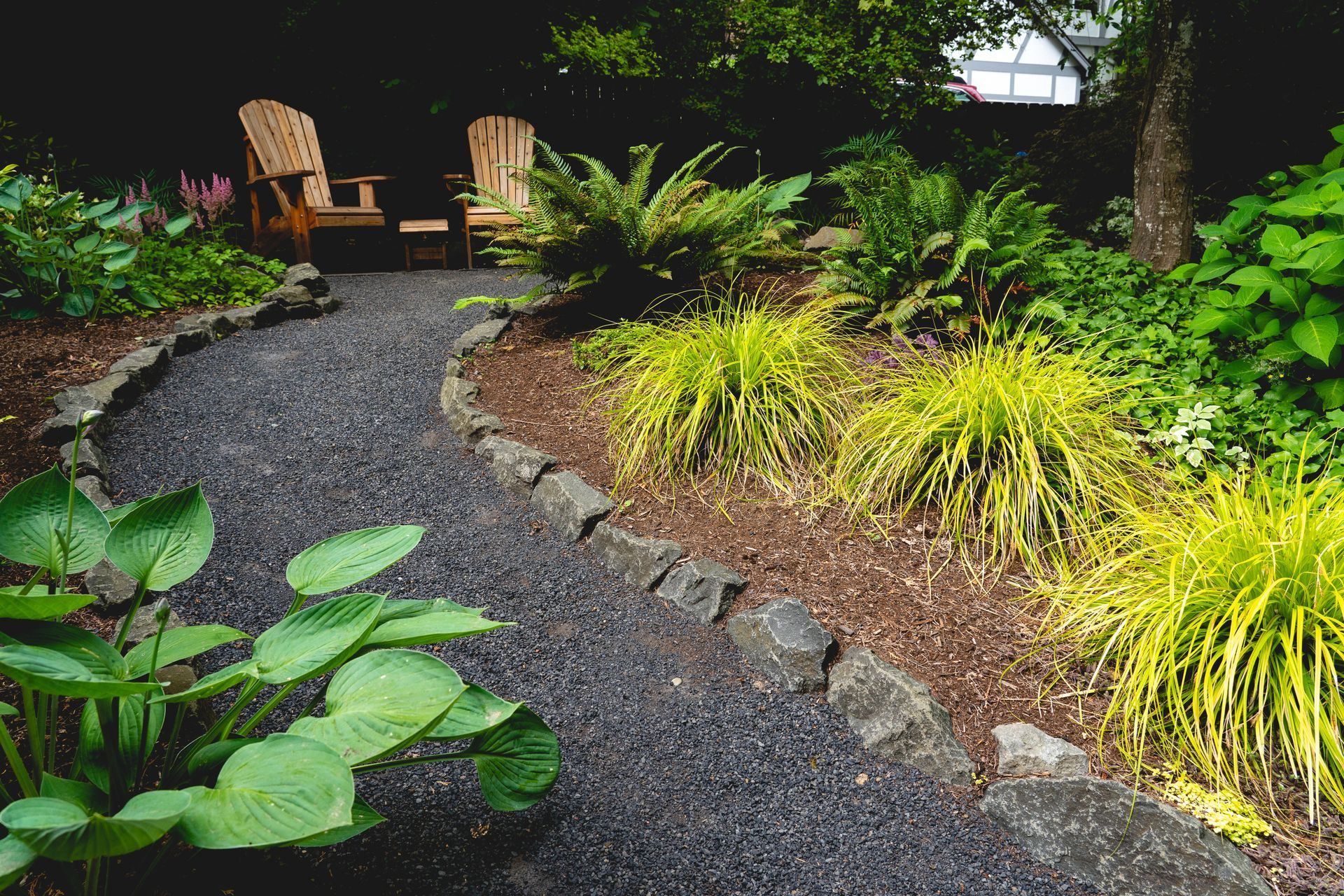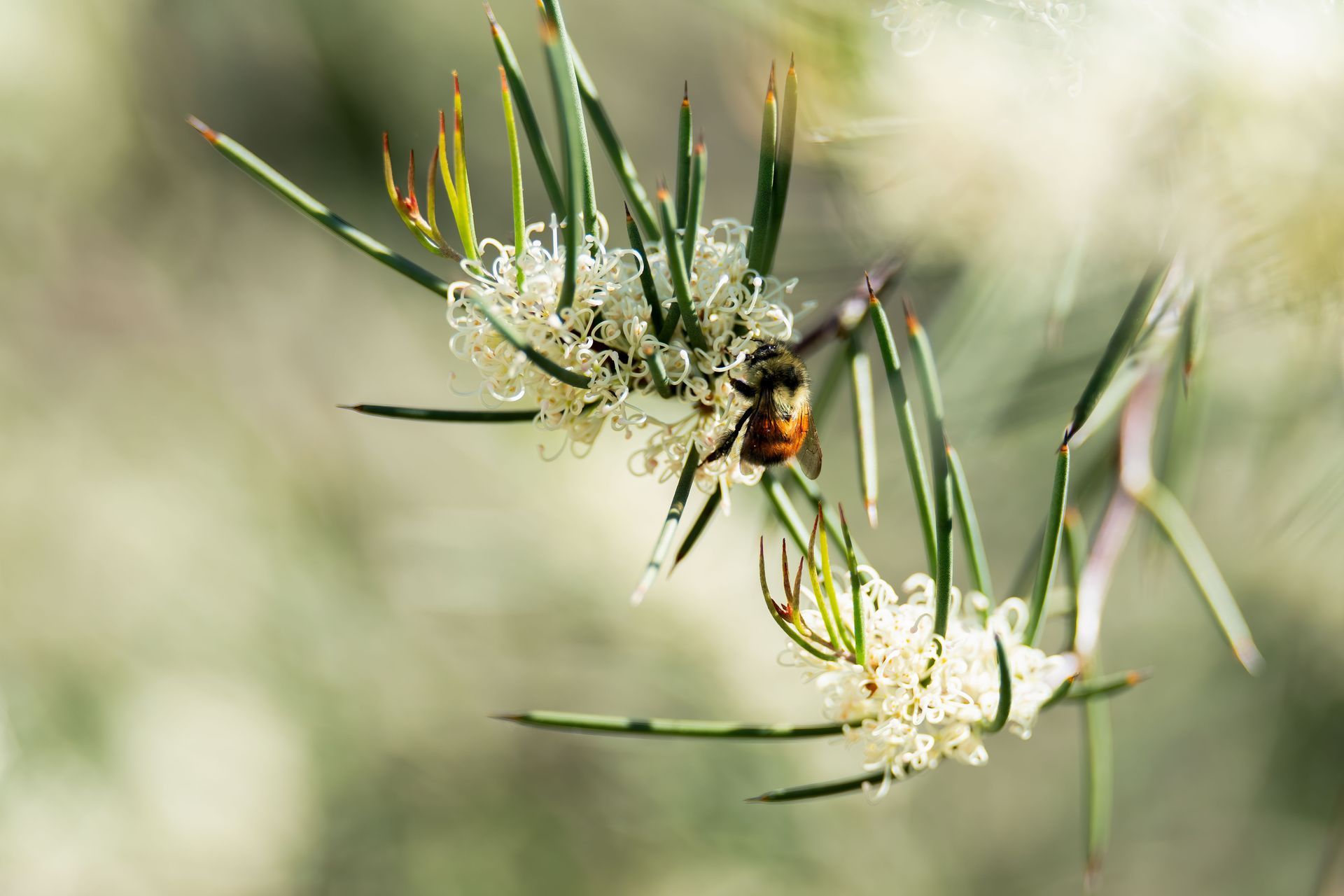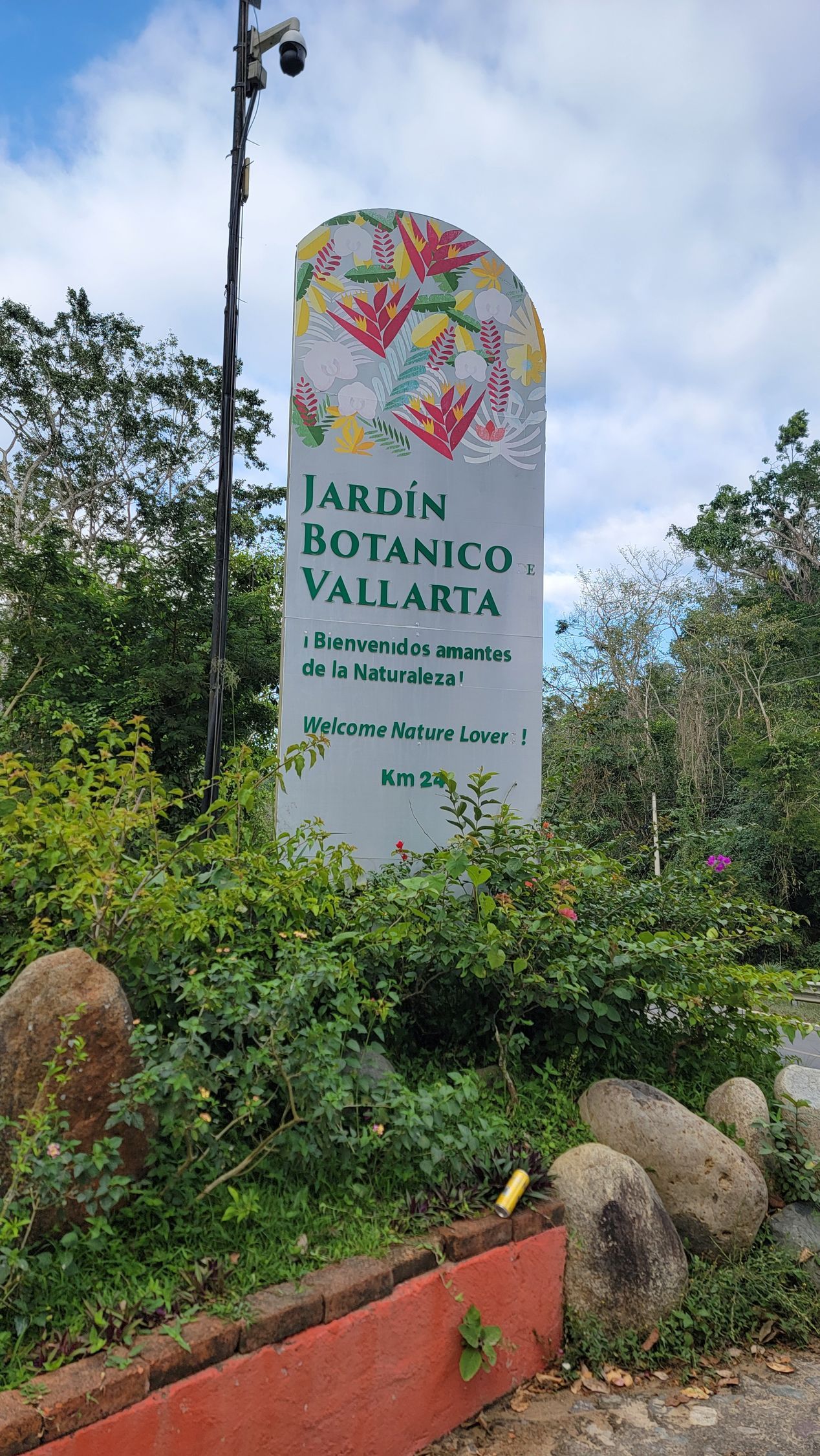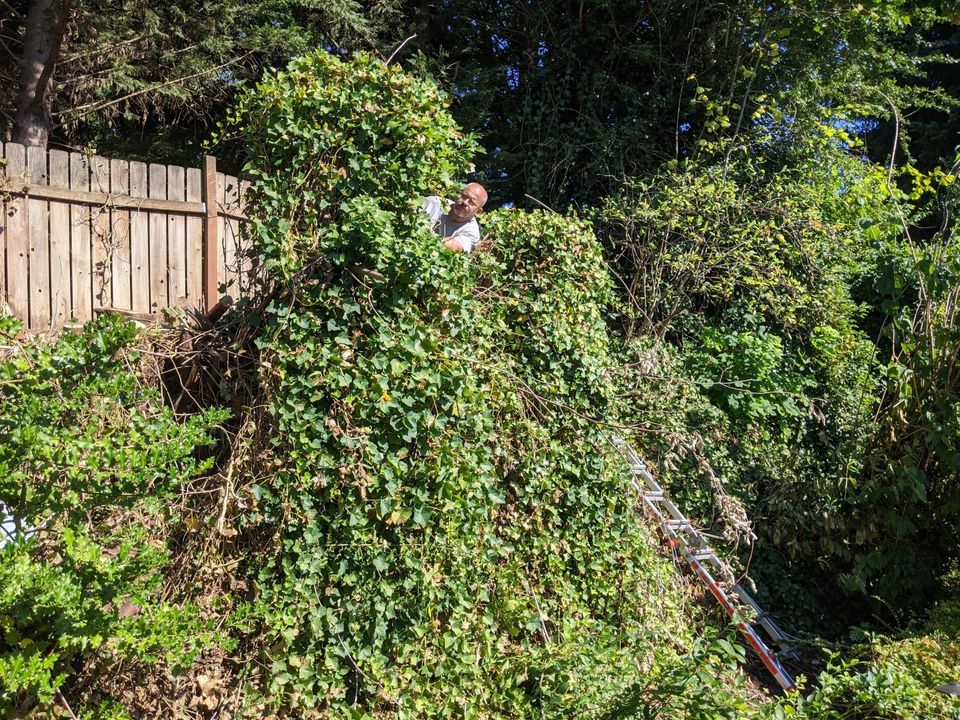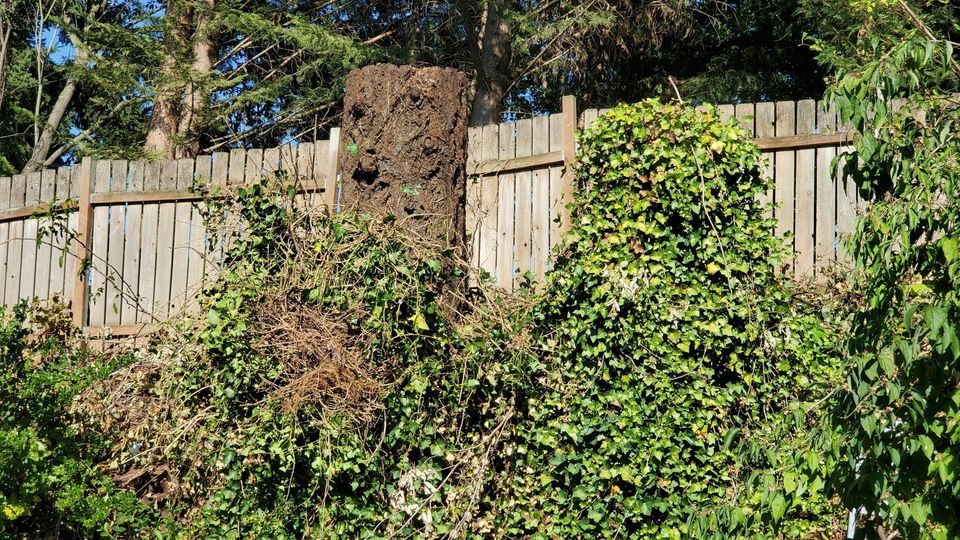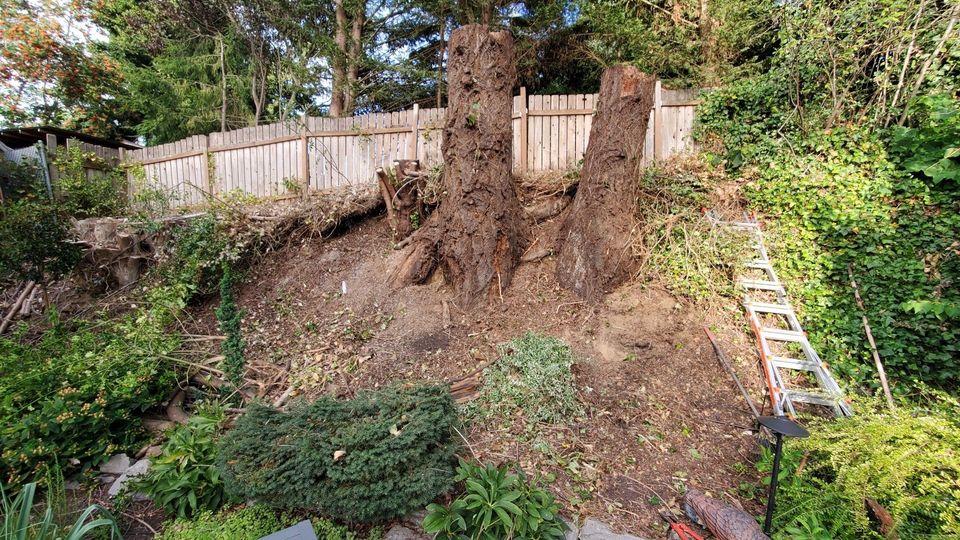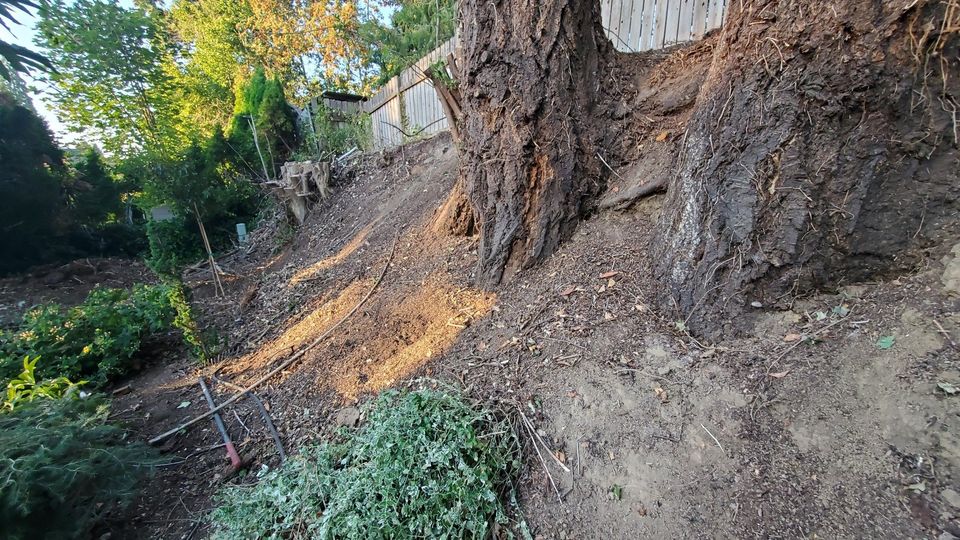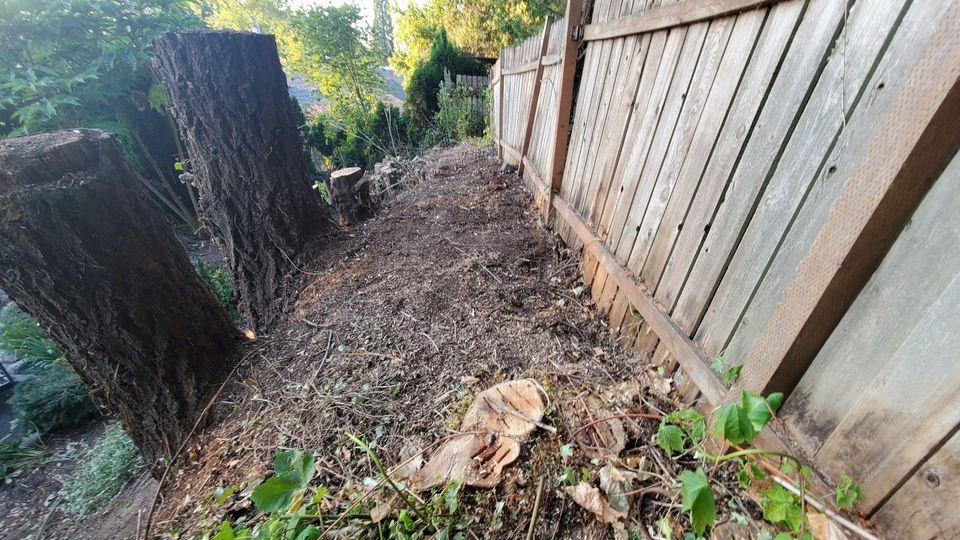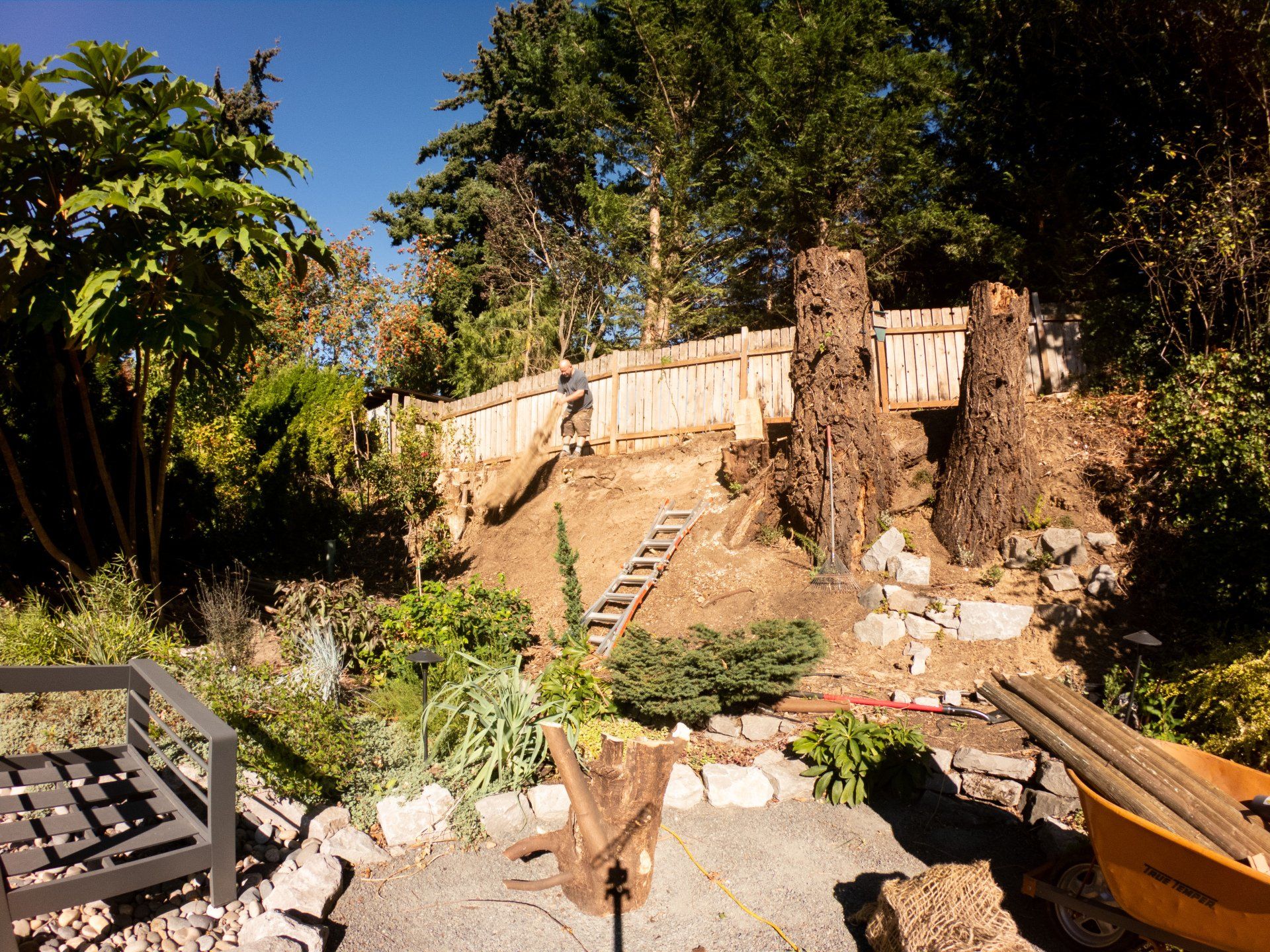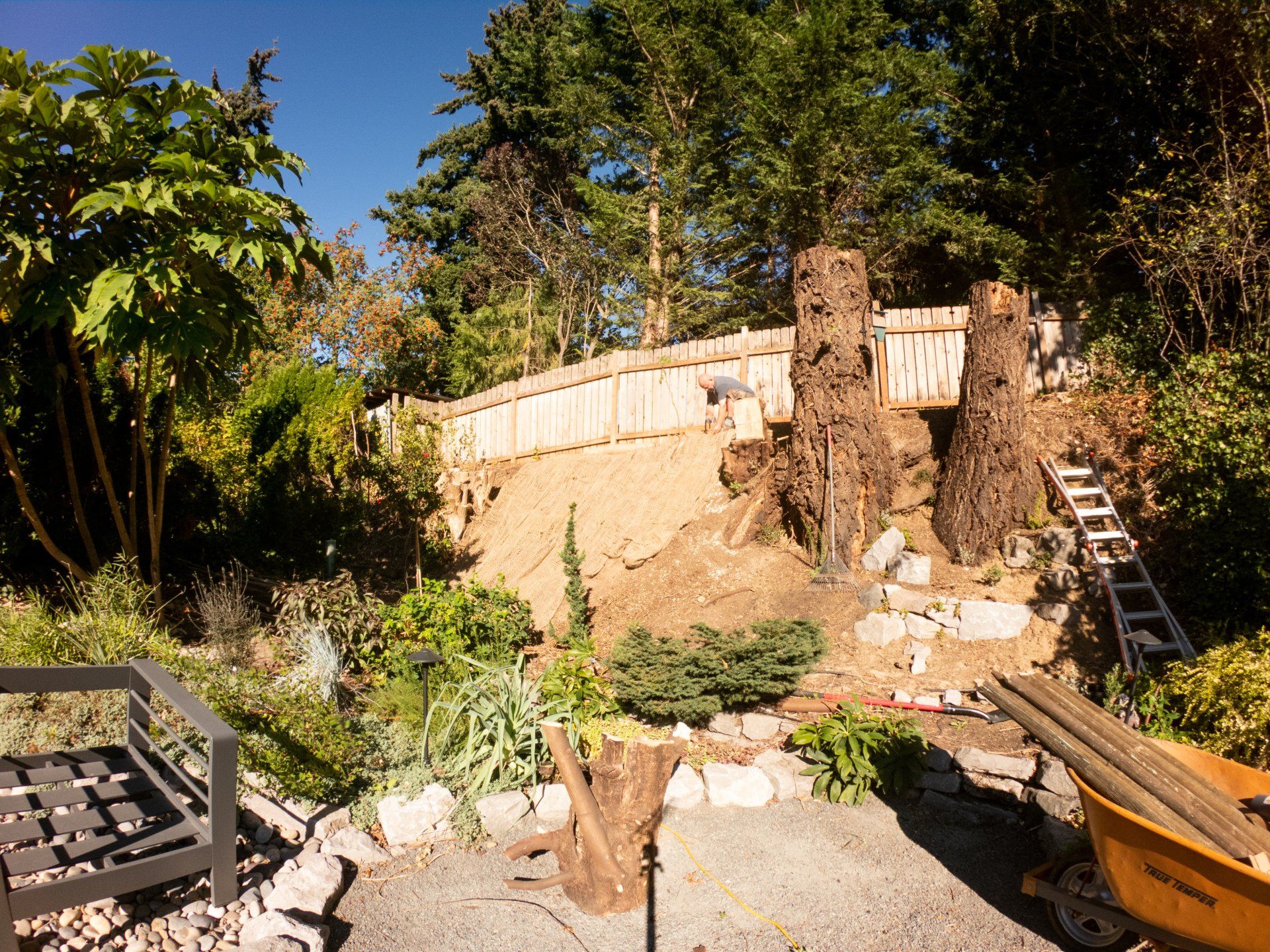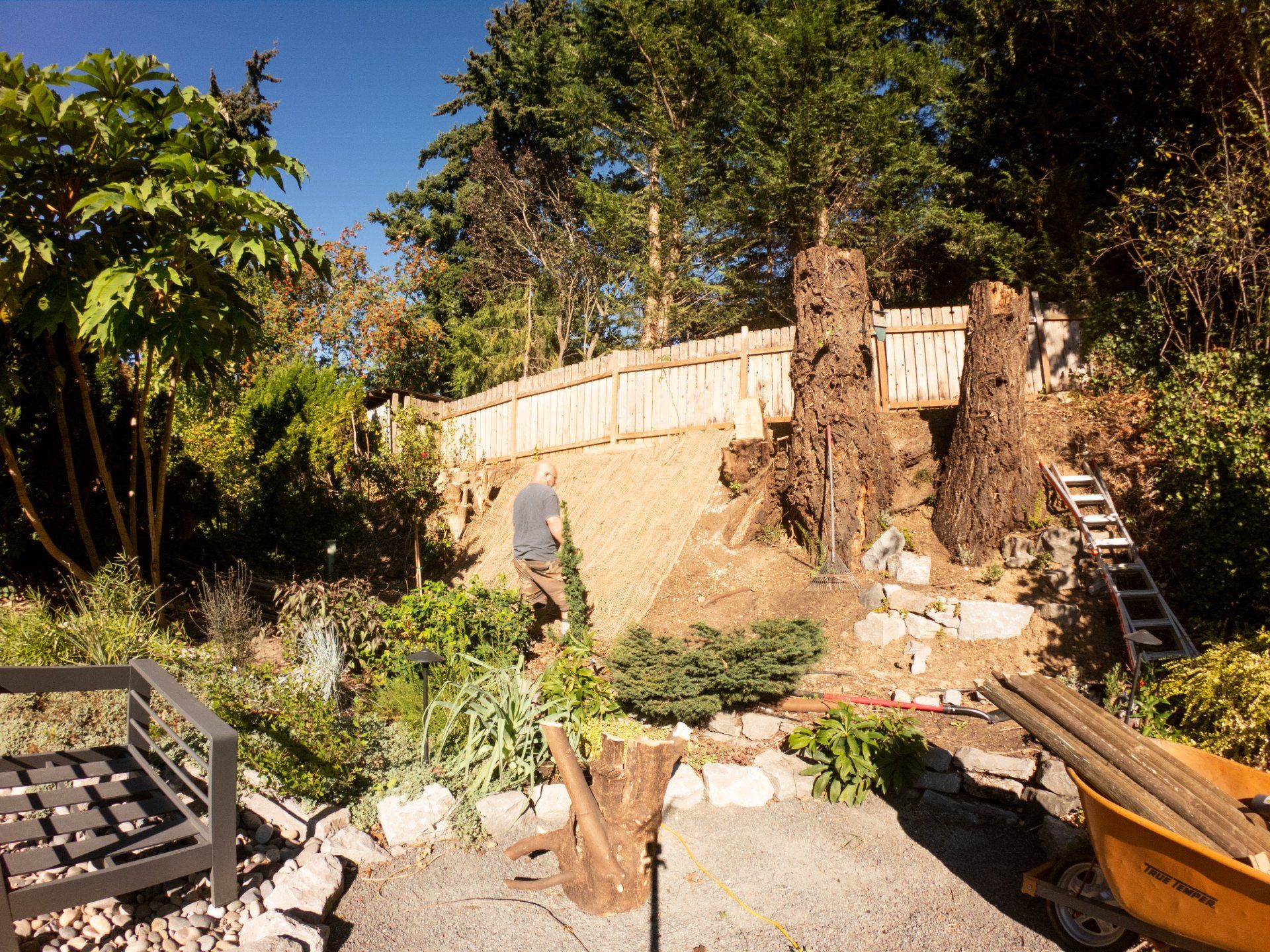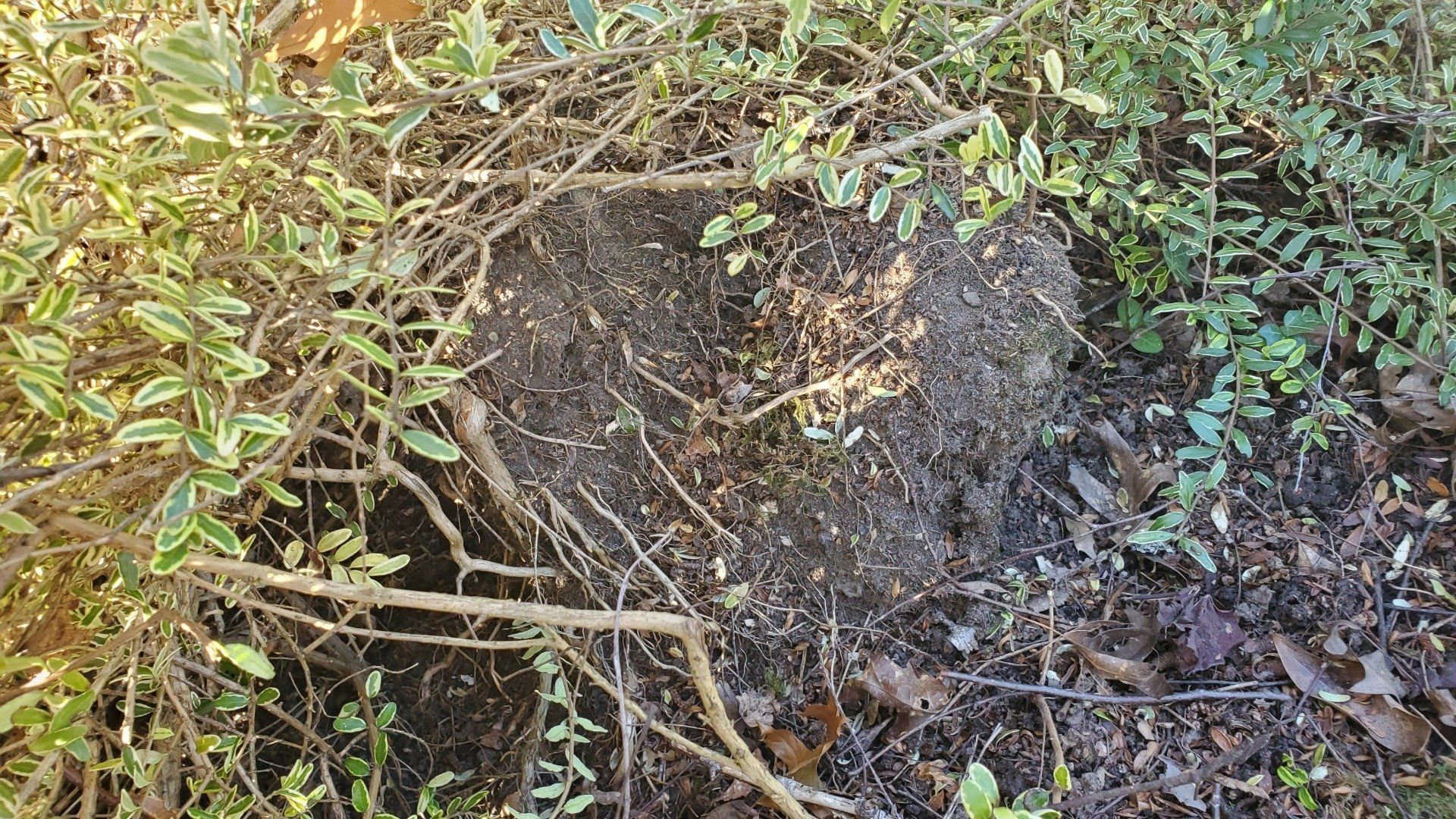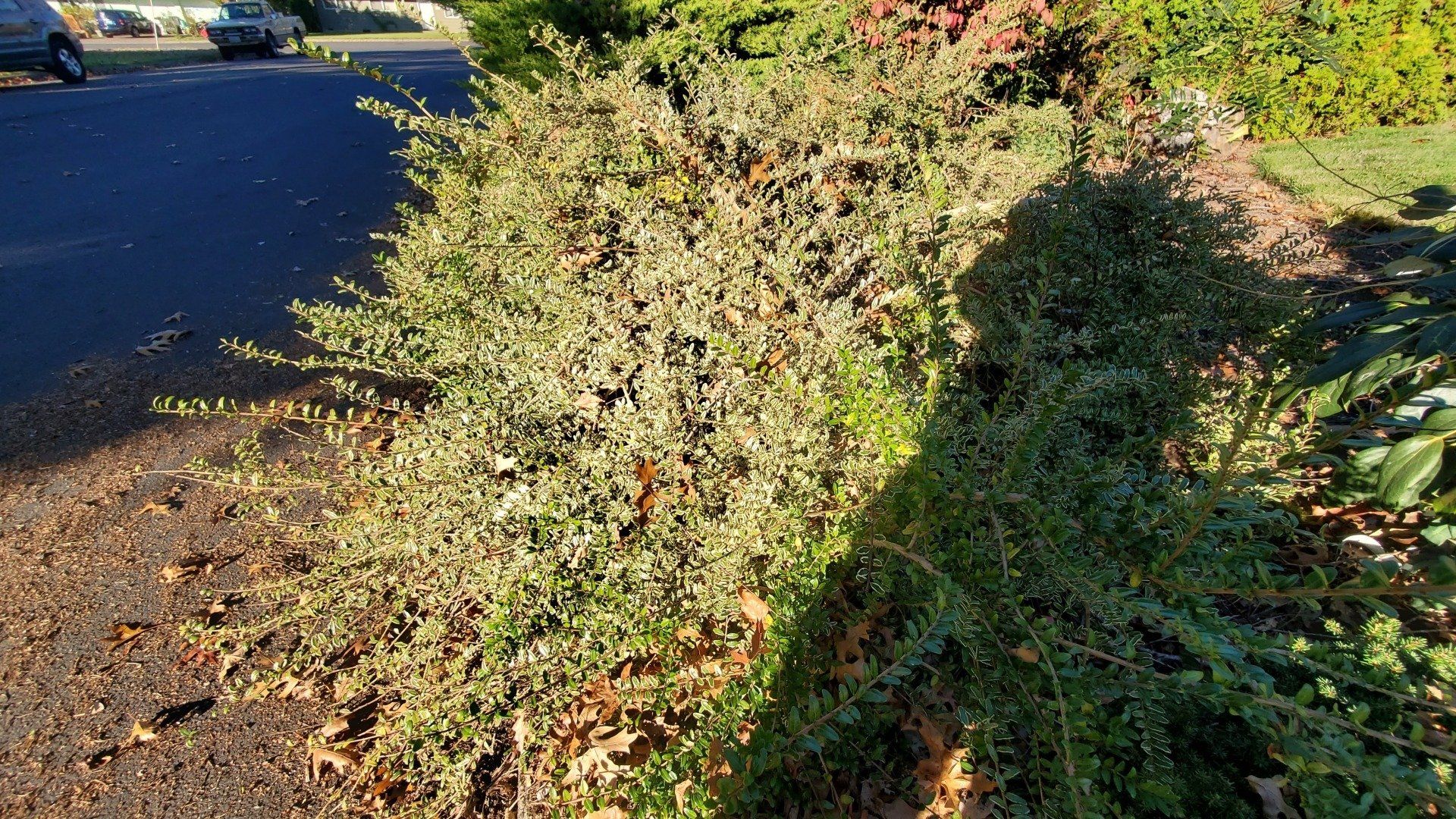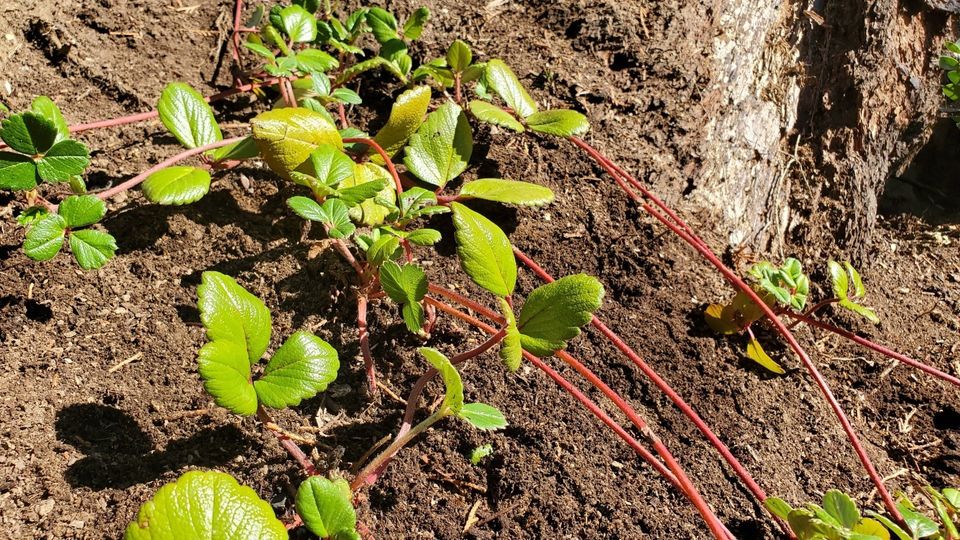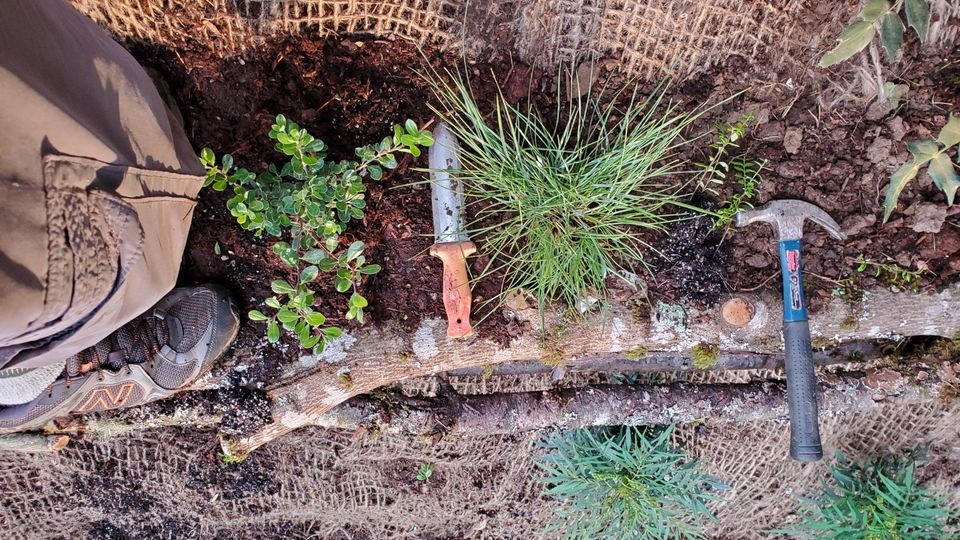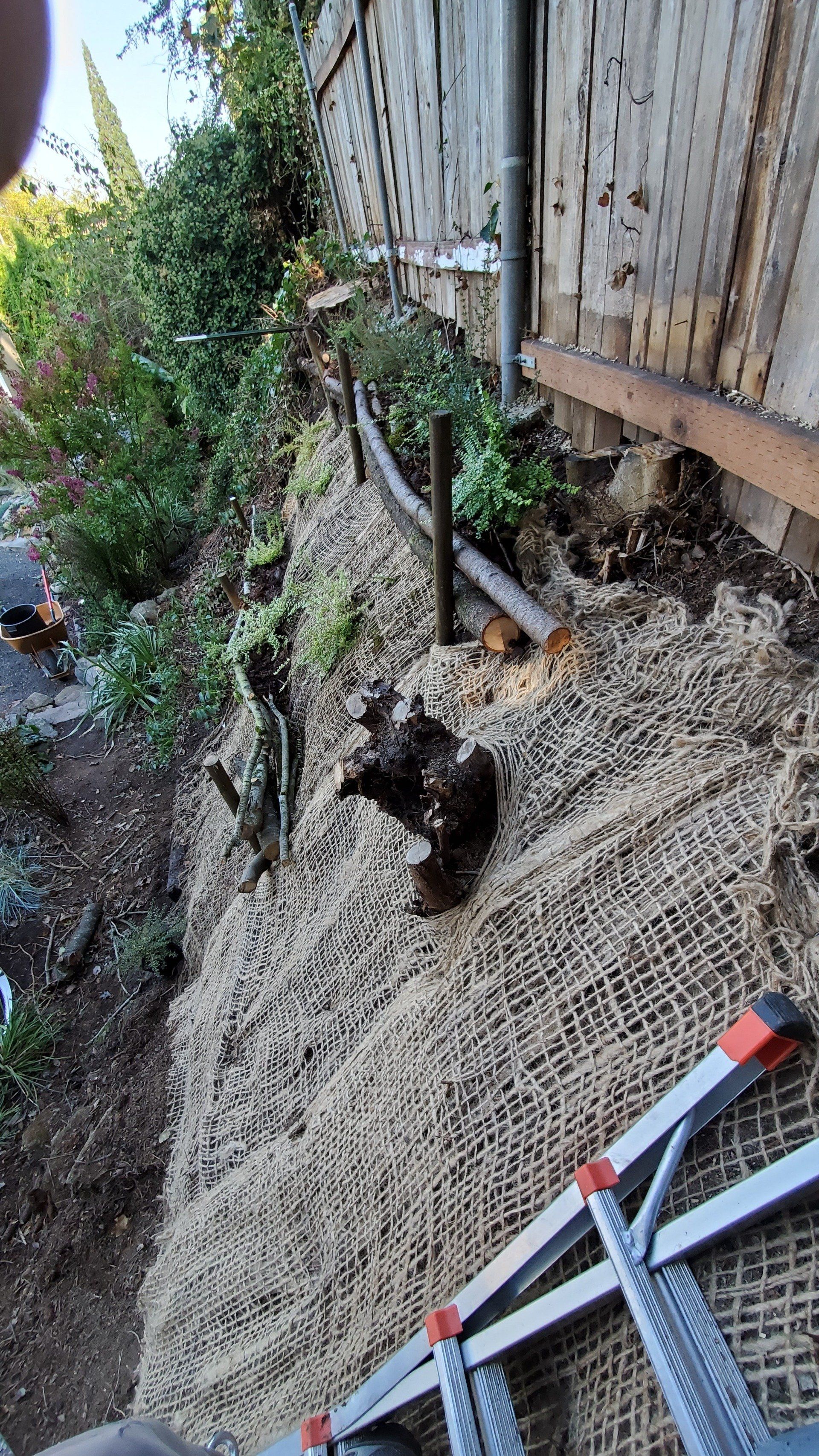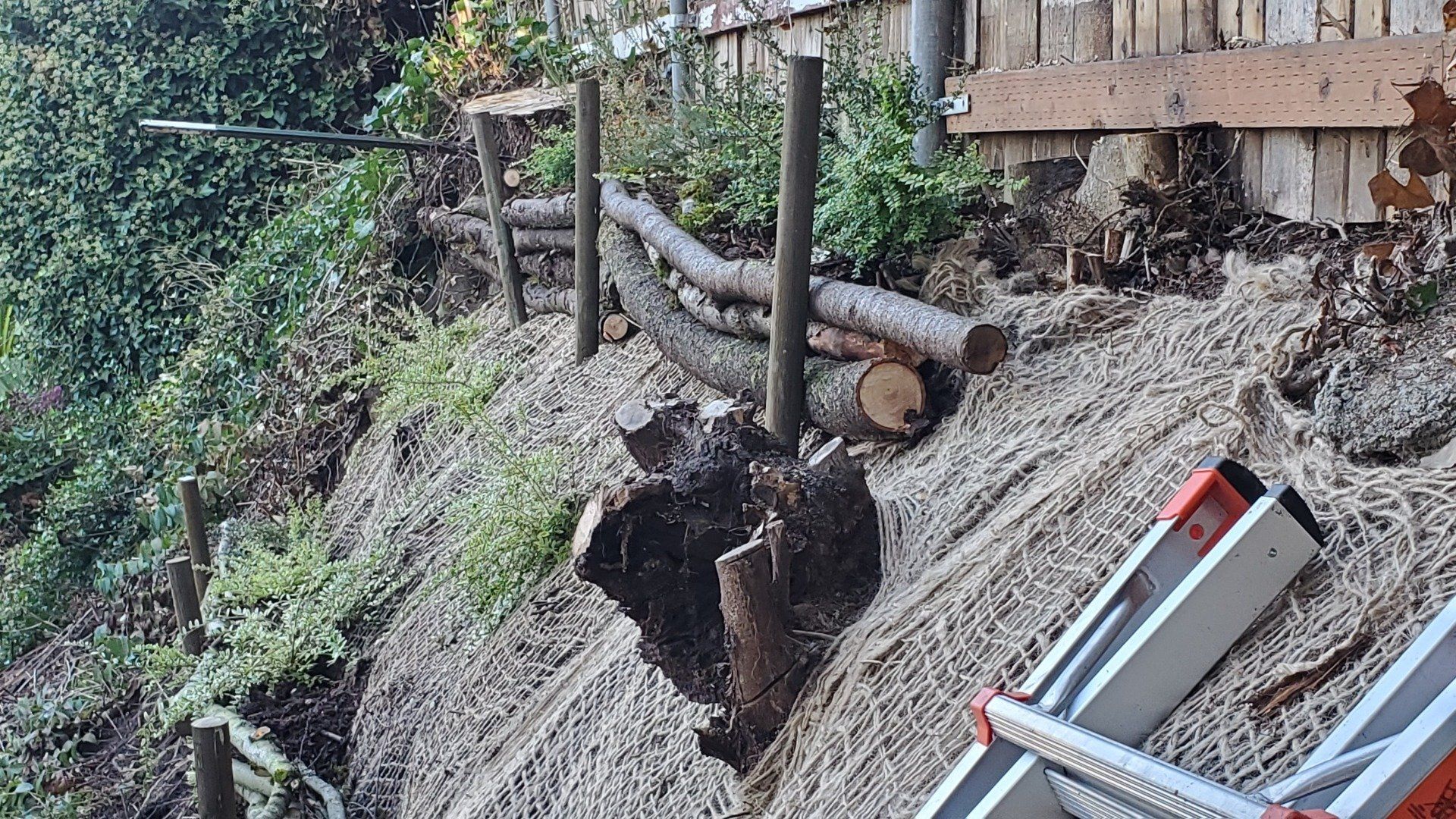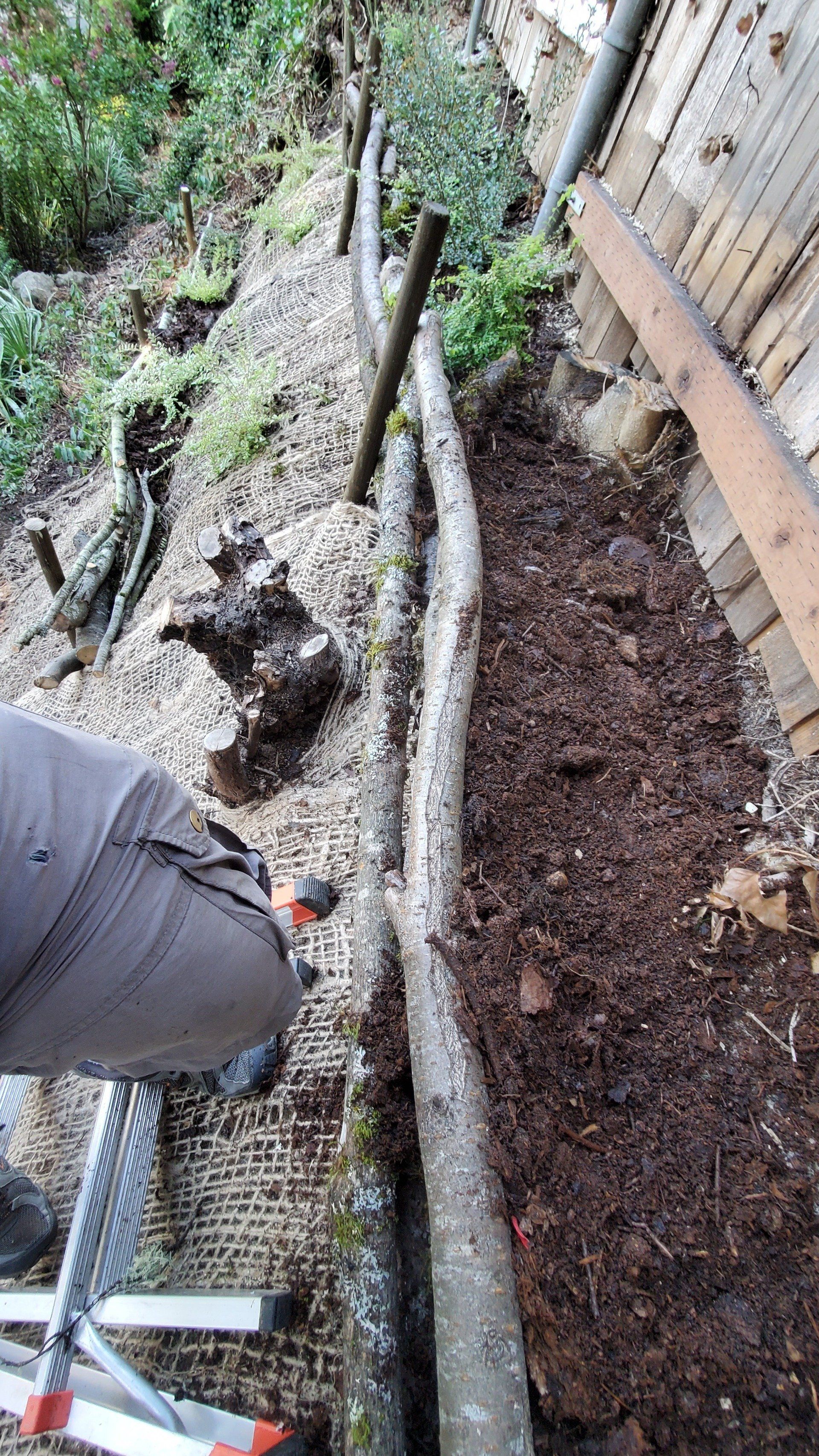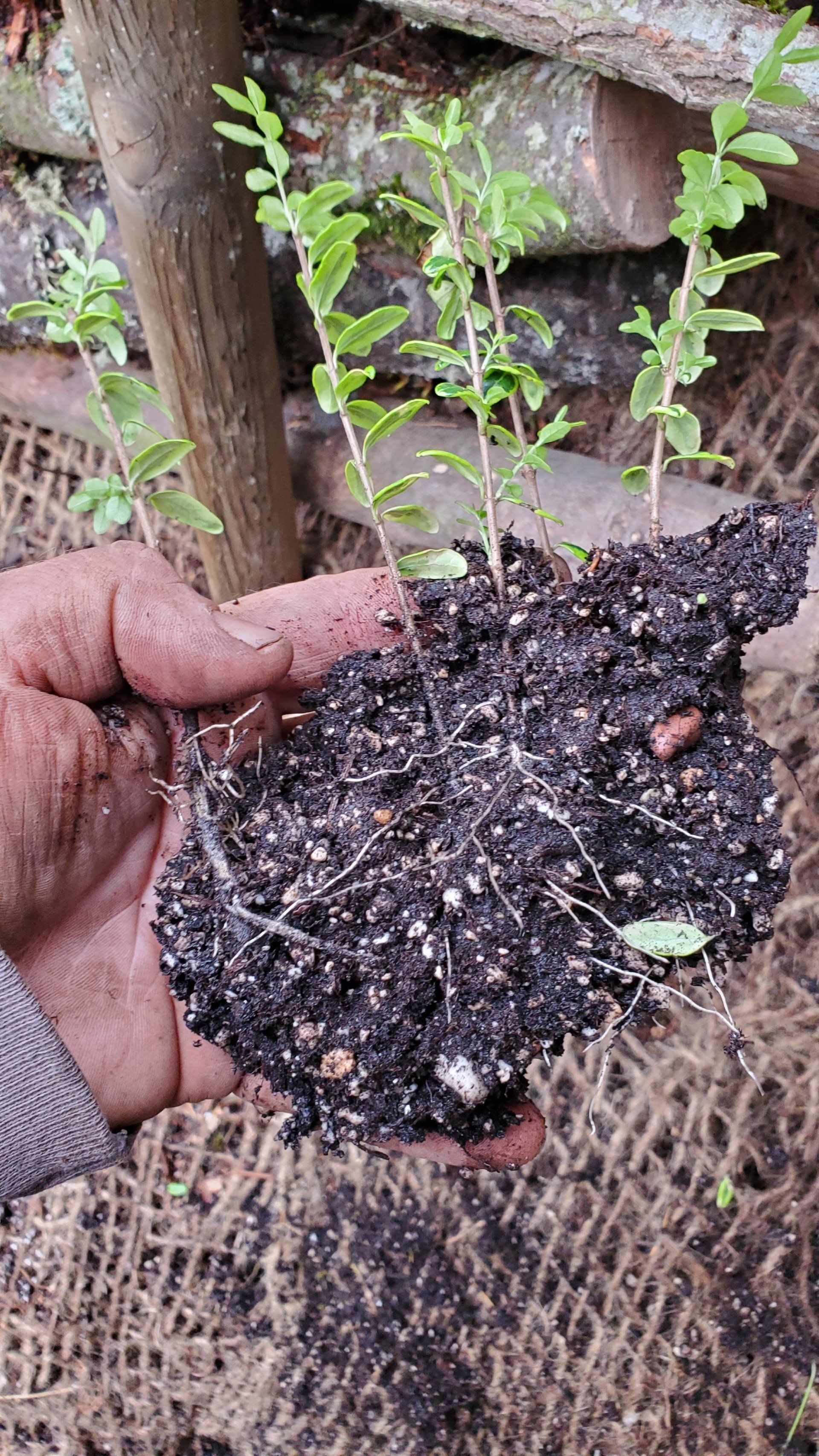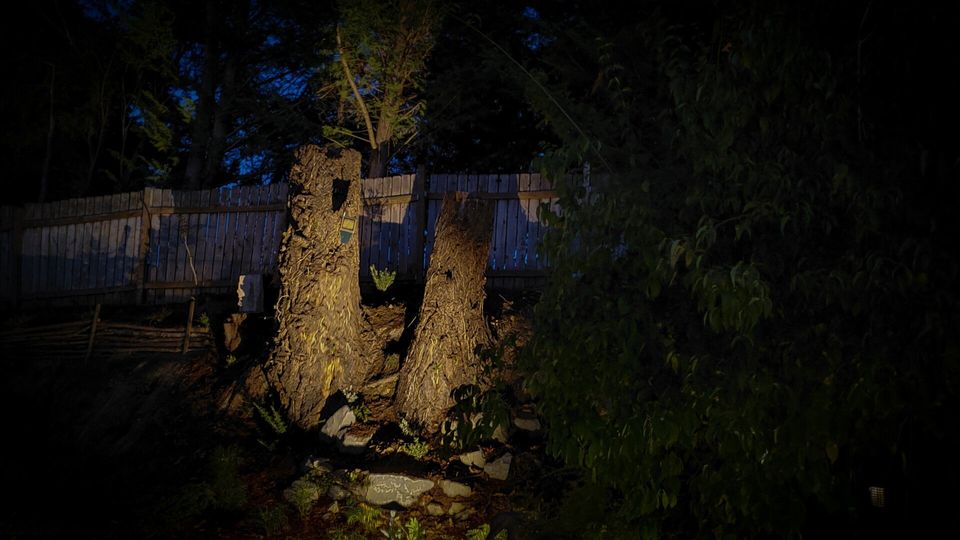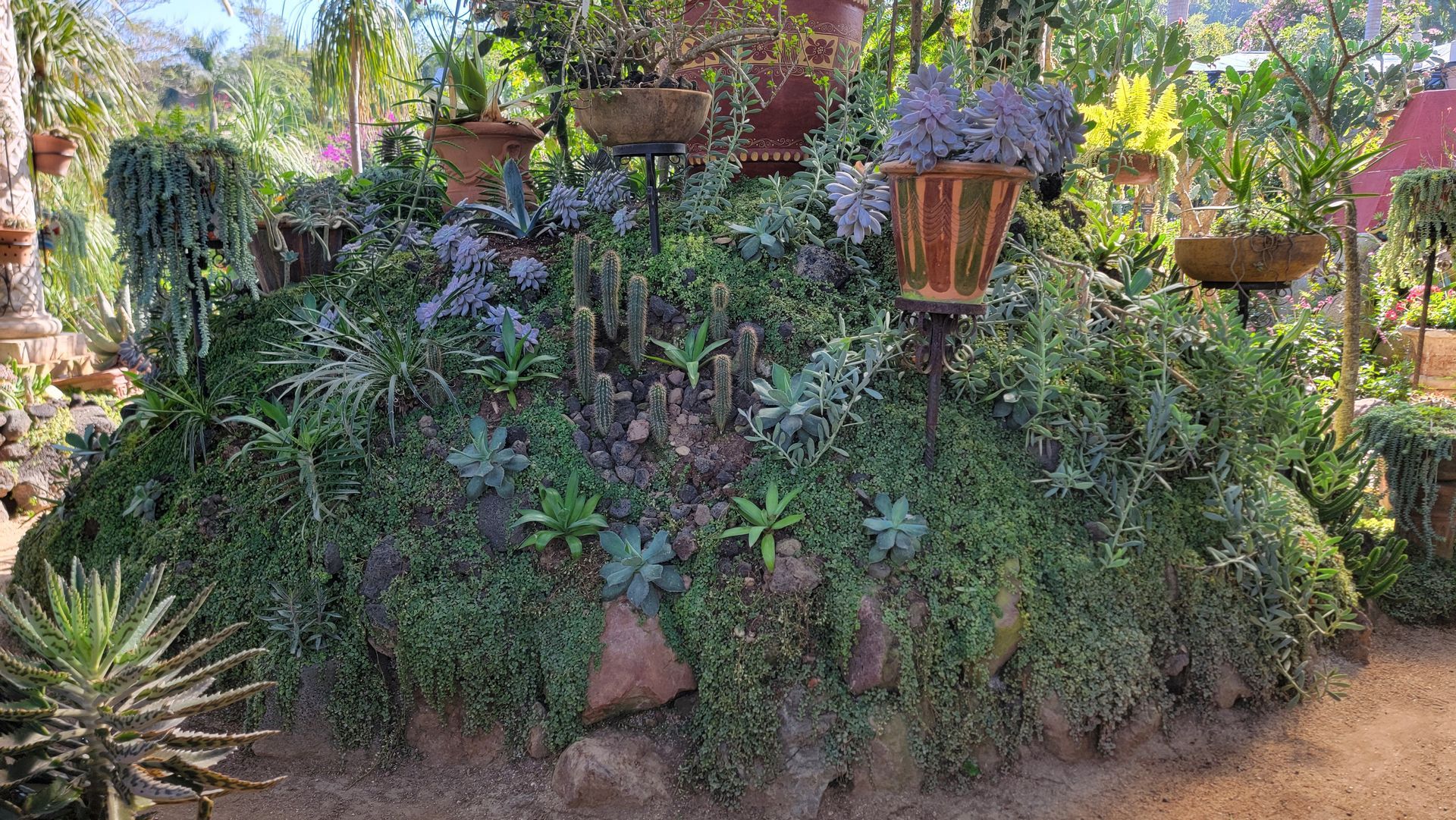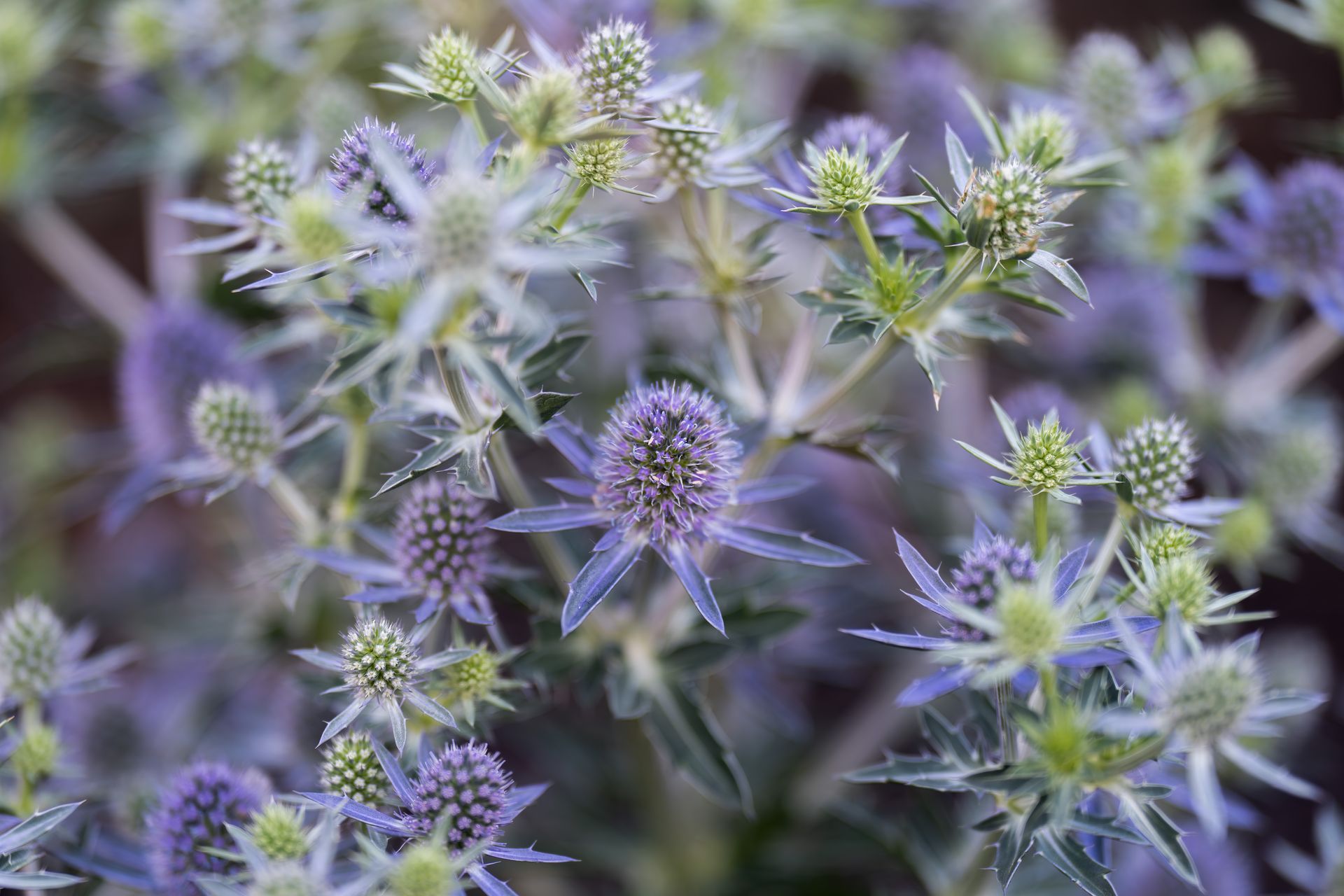Taming A Slope
Forty years of weed seed is hiding under all this Ivy; imagine what will happen when all this seed gets exposed to light! Getting plants established will be critical for multiple reasons. Now, how would I slow water down to help prevent erosion and allow plants to take root? There are many different strategies, but my friend Vanessa had mentioned a technique called Fascine she had used on her Ravine Project.
I didn’t want to get ahead of myself, so I started working on both sides of the slope, leaving the center for next year.
My plan would incorporate the use of Jute fabric.
Jute fabric helps with erosion control, it will decompose over time but last long enough for plants to establish.
Fascine Installation
There are many uses for Fascine, the primary function is mostly the same, to slow the movement of water.
I had seen fascine used a lot to stabilize slopes and riverbanks and never knew it had a name. For riverbanks and some steep slope management the use of live cuttings is incorporated, using them as stakes to stabilize the structure, the live cuttings of small trees that root very easily help anchor them into the soil once the roots begin to establish.
For my project, I will use 4’ tree stakes pounded into the slope roughly 6’ apart. I’ll stack larger branches behind the stakes and backfill with soil over the top of my Jute fabric. The fabric and the fascine will help stabilize the soil and help secure the plants I plan to use.
I'll incorporate, along with other plants, small Box Honeysuckle-Lonicera nitida cuttings. Box Honeysuckle is very drought tolerant. In fact, a few years ago, in the heat of summer, I dug up a large Lonicera nitida 'Lemon Beauty' and moved it to the front garden, near the street on the hot, West side of the garden, forgetting to plant it, and it rooted right into the ground and never flinched. Five years later (I know, no need to shame me, I can do that myself), it is looking great.
With the help of Greg Shepherd and Paul Bonine of Xera Plants I came up with a plant list that I think will work great. I’ll be using Ceonothus, Arctostaphylos, Cistus, Mahonia, Leptosperma, Coprosma and Fragaria chiloense ‘Aulon’
The top of one section of the slope could be mulched to help suppress weeds. After the mulch was in place, I top dressed the mulch with gravel so I could over seed with Poppy seeds.
Now this is the steep side. I will be installing two levels of fascine on this side. At the top of this portion of the slope is the neighbor’s fence (UGLY FENCE), which doesn’t give me any room to plant any screening plants. The fascine at the top of the slope will help me get some larger growing Ceanothus established up there as well as stabilize the soil.
When choosing plants for a project like this, always try to source very small plants to minimize soil disturbance.
And this is where I’m going to leave it for the season.
Here's a short video clip of the whole process.
Thanks!
